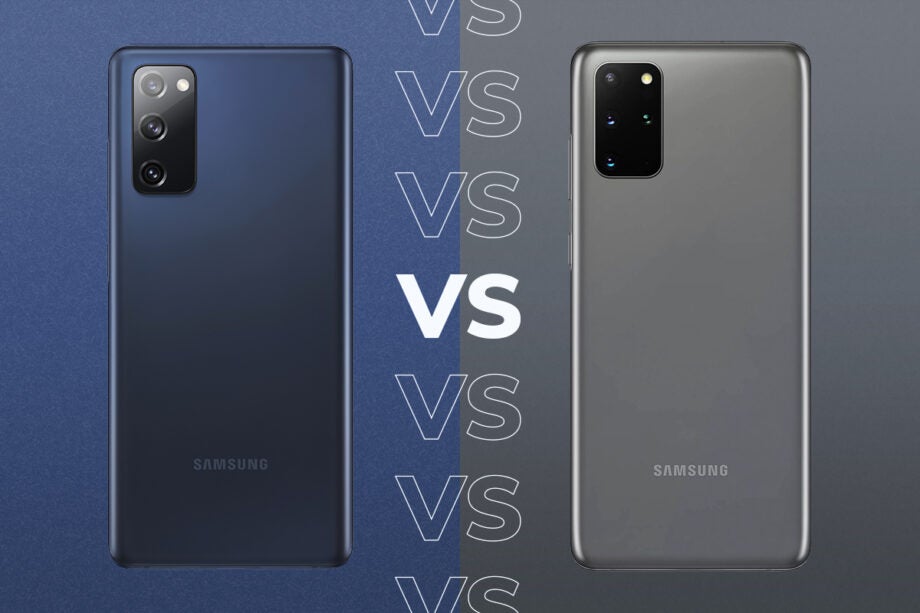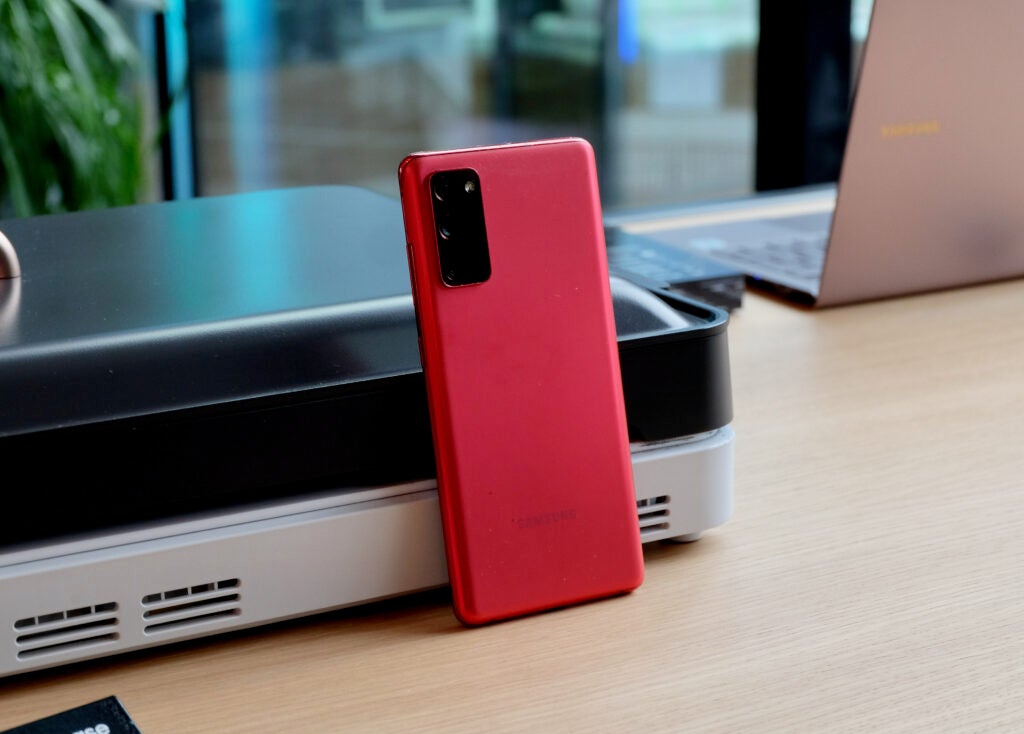Samsung Galaxy S20 FE (Fan Edition) vs Galaxy S20: What’s the difference?

The Samsung Galaxy S20 FE is here, but how does it compare to the Galaxy S20 you’ve been able to buy for months now?
Samsung has been churning out a load of high-powered phones this year and it can be tricky to really decide which is the best.
Read more: Samsung Galaxy S20 FE review: hands-on
The Fan Edition is a slightly cheaper version of the S20 that takes a lot of design traits from the more recent Galaxy Note 20 and Note 20 Ultra. Here’s everything different between the two Samsung phones.
The Galaxy S20 FE looks a lot more like the Note 20 than the S20
Like the cheaper version of the Galaxy Note 20, the S20 FE has a ‘glasstic’ (aka plastic) back with a frosted matte finish. That’s quite different to the S20, which has a classier glass back with a smudgy and glossy finish.
Both phones have an IP68 rating, microSD expansion, USB-C for charging and eschew the headphone jack. They also have small cutouts in the display to allow for the single selfie camera.
The Galaxy S20 FE has less choice when it comes to screen size
You can get the Samsung Galaxy S20 in various sizes (6.2-inch, 6.7-inch and 6.9-inch) whereas the FE comes in a single 6.5-inch option.
We spent some time with the Fan Edition and found the size pleasant and it’s roughly the same as the iPhone 11 Pro Max. If you prefer a smaller phone, you’re still likely to prefer the base Galaxy S20.
Related: Best mid-range phone

In terms of the displays themselves, Samsung said you’ll get more colour accuracy from the S20 panels even though they all have OLED. They all have a 120Hz refresh rate too, and a 240Hz touch sampling rate for responsive gaming.
A notable difference is the resolution. All the regular S20s have a maximum WQHD+ resolution, while the S20 FE lowers that to FHD+. Now, you can’t actually use that higher resolution and the 120Hz refresh rate at the same time anyway so this doesn’t feel like much of an issue to us.
Samsung has decided to use a different fingerprint sensor on the FE. Here, you’ve got an optical sensor as opposed to the ultrasonic sensor you’ll find on the S20. The big difference here is that an optical sensor requires a burst of light to operate, whereas an ultrasonic does not.
You’ll only find the Snapdragon 865 inside one of these phones (in the UK at least)
Inside the Samsung Galaxy S20 FE (Fan Edition) 5G version you’ll find the Snapdragon 865 – the chip that powers the S20 in regions like the USA and Korea. This will likely be a great move for those who have criticised Samsung for sticking with its own Exynos 990 chip in UK S20 models.
RAM starts at 6GB on both the S20 and S20 FE, however some of the Plus and Ultra S20 variations up this to 8GB and beyond in certain regions. Again, both the base S20 and the S20 FE start with 128GB of internal storage, with the S20 Plus and Ultra upping that more.

The Galaxy S20’s camera should beat S20 FE’s
The Samsung Galaxy S20 series comes in three sizes and it is the Ultra version that had the most camera firepower. The largest S20 has a 108MP sensor, a periscope lens for zooming and an ultra wide. Both the S20 and S20 Plus swap that main 108MP sensor for a 12MP sensor.
It’s that same 12MP sensor you’ll find on the back of the S20 FE, with the f/1.8 aperture and dual pixels. One interesting note is that the S20 can shoot 8K video, while the S20 FE can’t. The S20 FE also has a 32MP selfie camera, 8MP zoom camera and 12MP ultra wide.
First impressions
Price is the biggest factor differentiating the two S20s. The S20 FE starts lower than the S20 at £599 and for £699 you get the 5G version. That’s about £100 less than the S20 was at launch for the comparative model.
Related: Best phone
The S20 FE certainly feels like it packs many of the most important features from the S20 and it comes in a lower price and in a nicer range of colours.


